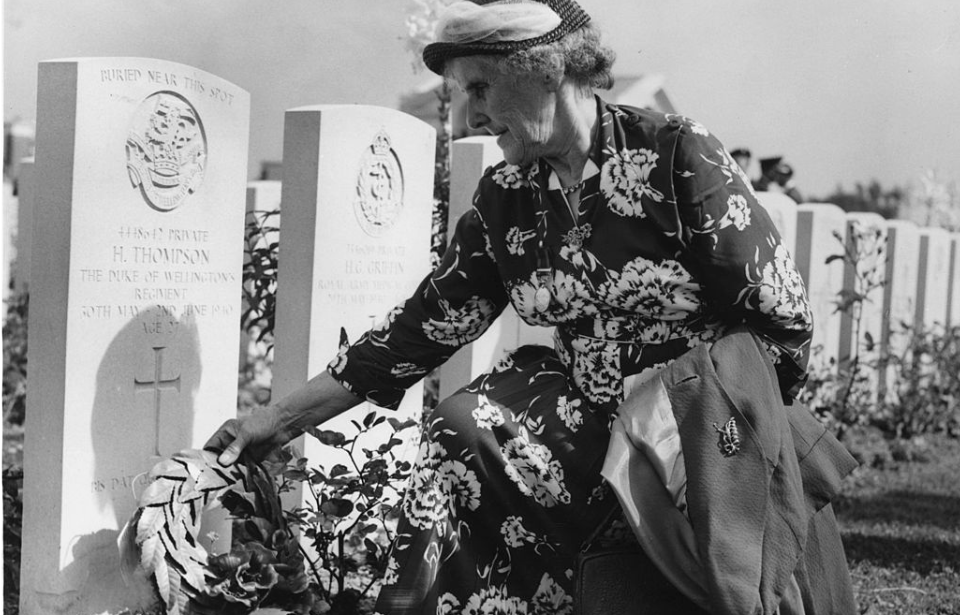The Battle of Dunkirk remains etched in history as a testament to human resilience and sacrifice. As Allied troops faced imminent defeat on the shores of France, they staged a daring evacuation operation that resulted in both triumph and tragedy. Rescued by “little ships,” these men returned to England to await further deployment. They were celebrated as heroes – but there were also several casualties who never made it home from the beaches of Dunkirk.
The above photo was taken on June 30, 1957 by Terry Fincher, who went on to become one of the best-known photographers of the Vietnam War. He captured the touching image of 73-year-old Jane Thompson laying a wreath at the grave of her son, Pvt. Harry Thompson, one of the many casualties of Dunkirk. He was killed sometime in late May or early June 1940 while fighting as part of the Duke of Wellington’s Regiment (West Riding) with the British Expeditionary Force (BEF).
Thompson was 27 at the time of his death. Although his mother is covering the epitaph at the bottom of the grave with the wreath, it’s believed to read Bis dat qui cito dat – “He who gives swiftly gives twice.”
While there’s little information on his service, the Duke of Wellington’s Regiment formed part of the rear guard during the retreat from Dunkirk. Sadly, stories like Thompson’s were very common. When the German Army advanced, hundreds of thousands of troops found themselves surrounded on the beaches of Dunkirk. Their only hope was a daring evacuation known as Operation Dynamo.
While the majority of the stranded soldiers were successfully rescued in a daring retreat, the operation wasn’t without casualties. Exact figures vary, but it’s estimated that roughly 5,000 Allied soldiers perished during the evacuation. They were lost either on the beaches or after making it onto one of the ships, many of which were sunk.
In the case of Thompson, it’s unknown where or how he died. Given the date range on his gravestone, however, it’s likely he was one of these men killed during the evacuation from the beaches, which took place between May 27 and June 4, 1940. Thompson died sometime between May 30 and June 2. This is increasingly likely, as the top of the epitaph indicates he was “buried near this spot,” not in the actual plot. Nonetheless, he was still given a grave.
More from us: The Story Behind a Lockheed P-38G Lightning Wreck Off the Southern Coast of France
For many, this wasn’t the case. The Dunkirk Memorial stands in Dunkirk Town Cemetery, marking the entrance to the portion where the Commonwealth graves stand. It was erected in honor of the over 4,500 BEF troops who died there, with no known grave.
